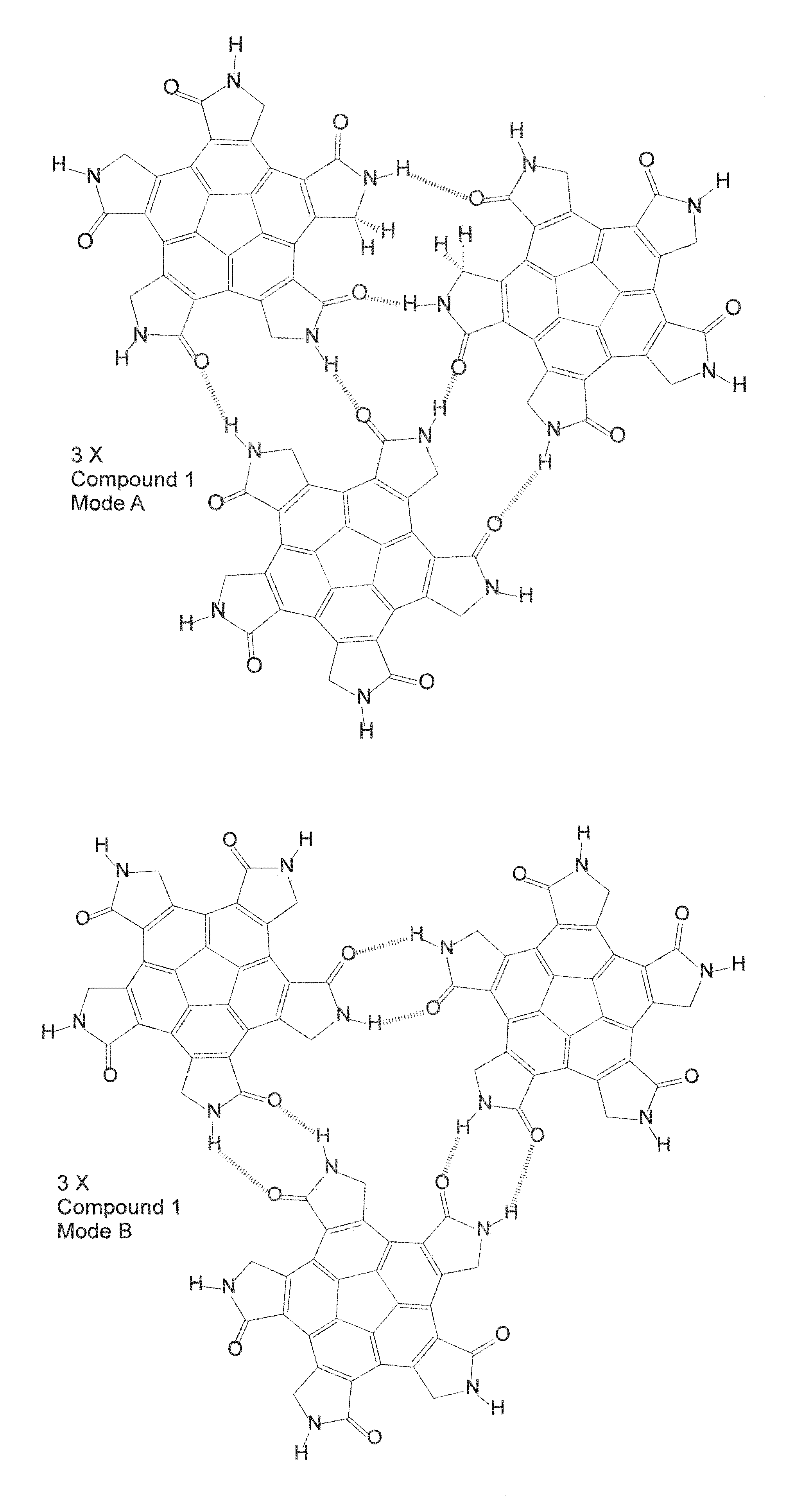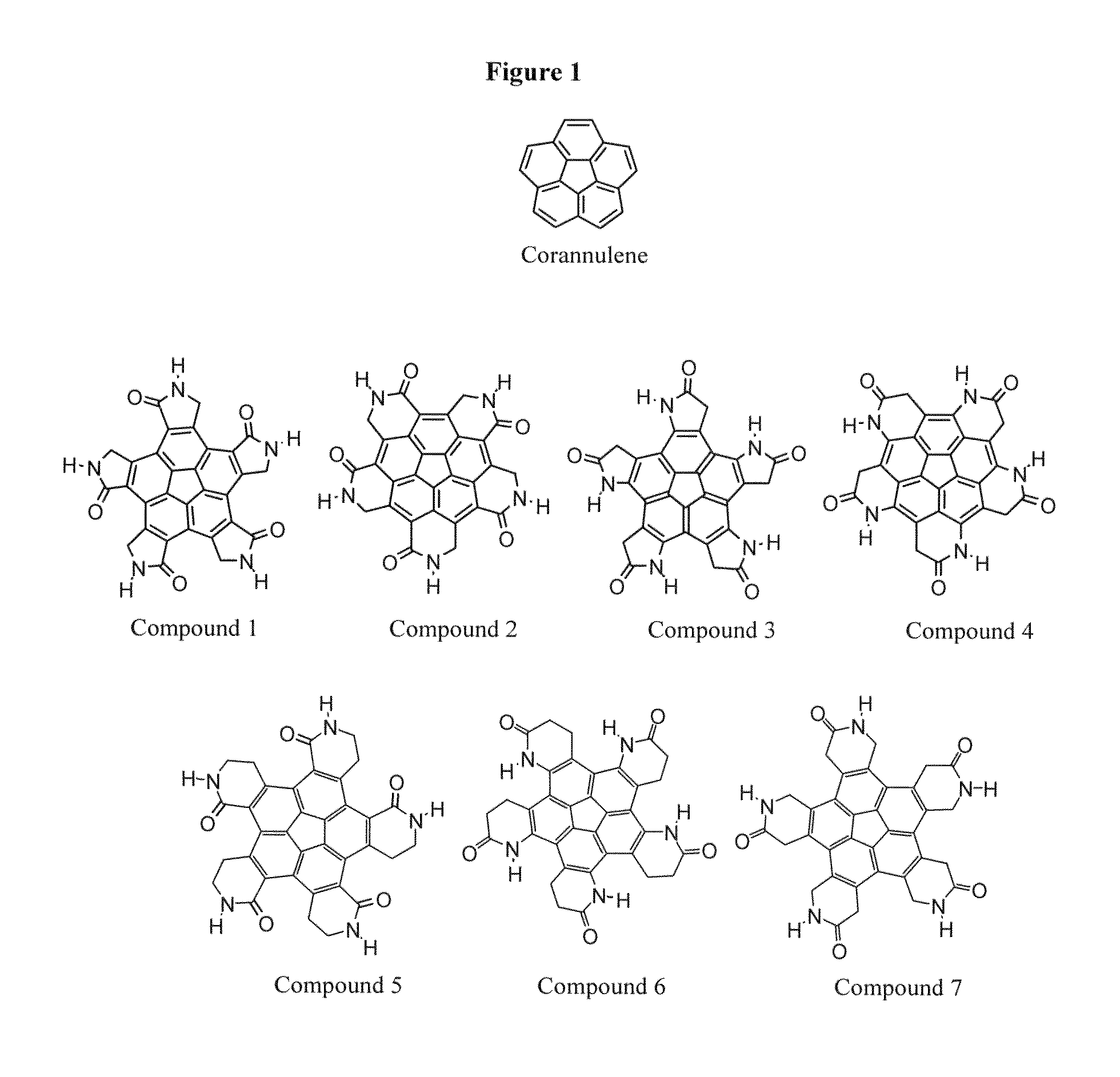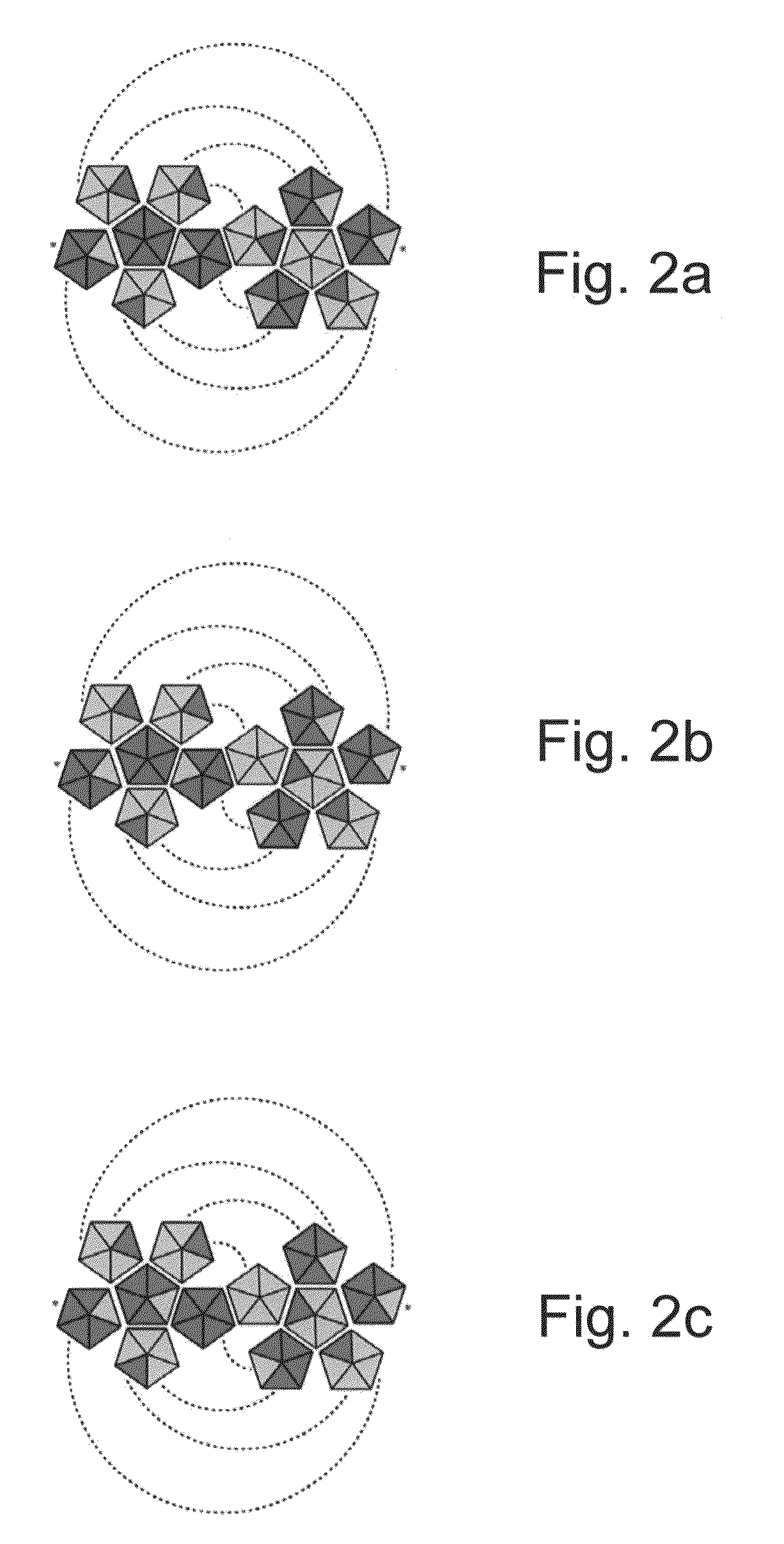Self-assembled polyhedral multimeric chemical structures
- Summary
- Abstract
- Description
- Claims
- Application Information
AI Technical Summary
Benefits of technology
Problems solved by technology
Method used
Image
Examples
example 1
General Synthetic Pathway for Preparing Chemical Monomers for Forming a Self-Assembled Chemical Multimer (Dodecamer) Structure
[0374]In order to form a closed, hollow and self-assembled chemical multimer structure, for example dodecahedral multimer (dodecamer) chemical structure according to the present embodiments, the structural core of the chemical monomers forming the chemical multimer has to fulfill several requirements as follows:
[0375]=the structural core needs to possess an appropriate symmetry, curvature and rigidity so as to allow the self-assembly formation of the chemical multimer; and
[0376]=the structural core needs to be selected such that introduction of associating groups which, together with the symmetrical shape of the core provide the chemical complementarity on the surface of the structural core, can be performed.
[0377]Corannulene (C20H10, “buckybowl”), was selected as an exemplary compound that can serve as the structural core of the chemical monomers forming the...
example 2
Self-Assembled Chemical Multimer Structure
[0417]The structurally symmetric compounds presented and discussed above are design so as to have the capacity to self-assemble into hollow chemical dodecahedral spheroids (chemical multimers) according to the present invention. FIG. 8 presents a uni-scale size comparison between three different chemical spheroids, namely a fullerene (C60) on the left, a self-assembled closed, hollow chemical multimer according to the present invention, comprised of 12 copies of Compound 1 in the middle, and a satellite tobacco mosaic virus (STMV), consisting of 60 identical copies of a single protein that make up the viral capsid (coating), on the right. As can be seen in FIG. 8, all three chemical structures constitute a spherical, closed chemical multimer and are known to be hollow, and span a rather large size range from 1.018 nm for C60 outer diameter to 16 nm for STMV outer diameter.
[0418]In the case of the self-assembled closed, hollow multimer chemic...
example 3
Application of Self Assembly for Molecular Computation
[0437]Self-assembled hetero-multimer structure systems can be used as molecular computing devices for solving mathematical problems. FIGS. 19a-b presents a schematic illustration of an exemplary self-assembled hetero-multimer structure system which can solve the mathematical problem of finding all the possible ways to cover a spherical surface using a library of 45=1024 different pentagonal “tiles”, each having a random combination of 4 possible associating groups. As can be seen in FIG. 19a, this “mathematical problem” is solved chemically by synthesizing a library of 1024 different compounds in a one pot reaction of 1,3,5,7,9-sym-pentaethynylcorannulene with a uni-proportional mixture of four azido-pyrimidine derivative compounds, referred to herein by the letters W, X, Y and Z, wherein X and Z are compatible for binding by forming three parallel hydrogen bonds therebetween, and similarly so are W and Y. FIG. 19b presents a sch...
PUM
| Property | Measurement | Unit |
|---|---|---|
| Structure | aaaaa | aaaaa |
| Symmetric field theory | aaaaa | aaaaa |
| Morphology | aaaaa | aaaaa |
Abstract
Description
Claims
Application Information
 Login to View More
Login to View More - R&D
- Intellectual Property
- Life Sciences
- Materials
- Tech Scout
- Unparalleled Data Quality
- Higher Quality Content
- 60% Fewer Hallucinations
Browse by: Latest US Patents, China's latest patents, Technical Efficacy Thesaurus, Application Domain, Technology Topic, Popular Technical Reports.
© 2025 PatSnap. All rights reserved.Legal|Privacy policy|Modern Slavery Act Transparency Statement|Sitemap|About US| Contact US: help@patsnap.com



